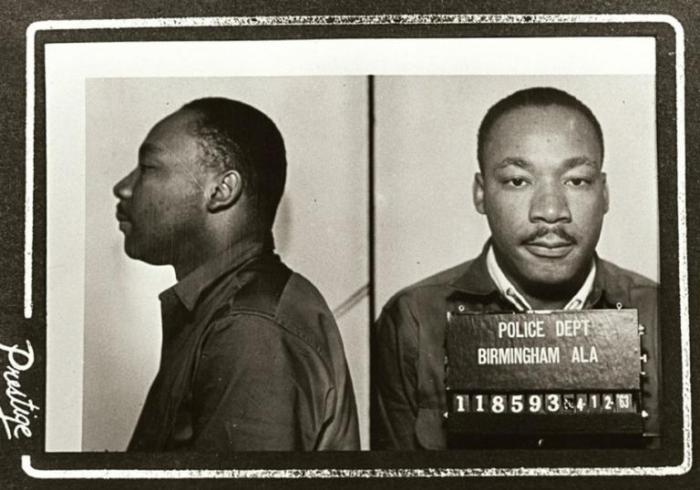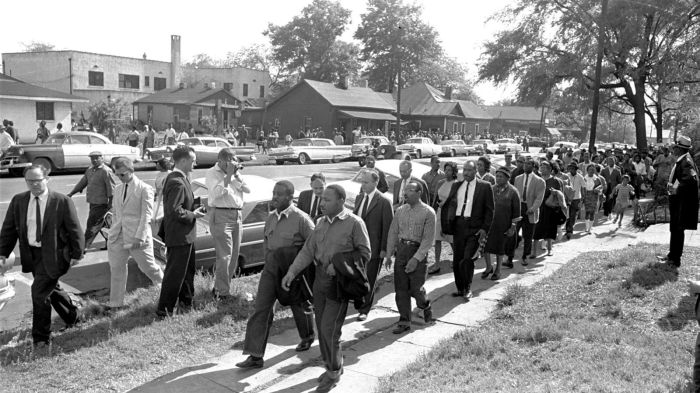Mla citation of letter from birmingham jail – The MLA citation for “Letter from Birmingham Jail” by Martin Luther King Jr. is a crucial element in understanding the historical significance and impact of this iconic document. This citation provides essential information about the source, enabling researchers and readers to accurately reference and locate the letter within academic and literary contexts.
Written in 1963, “Letter from Birmingham Jail” is a powerful and persuasive response to criticism directed at King’s nonviolent approach to the Civil Rights Movement. King’s letter eloquently articulates the principles of nonviolent resistance, the urgency of addressing racial injustice, and the moral responsibility to confront unjust laws.
Introduction

The MLA citation style is a set of guidelines used to format citations and references in academic writing. It is commonly used in the humanities, such as literature, history, and the arts. The MLA citation for the letter “Letter from Birmingham Jail” by Martin Luther King Jr.
is as follows:
King, Martin Luther, Jr. “Letter from Birmingham Jail.” Why We Can’t Wait, Harper & Row, 1963, pp. 77-100.
The purpose of an MLA citation is to provide readers with the necessary information to locate and retrieve the source being cited. The format of an MLA citation includes the author’s name, the title of the work, the publication information, and the page numbers (if applicable).
Background
The “Letter from Birmingham Jail” was written by Martin Luther King Jr. in response to a public statement made by eight white clergymen in Birmingham, Alabama. The clergymen had criticized King’s nonviolent protests against racial segregation, arguing that they were untimely and would lead to violence.
In his letter, King defended his actions and explained the moral and ethical reasons for his commitment to nonviolent resistance.
The letter was written on April 16, 1963, while King was incarcerated in the Birmingham City Jail. It was first published in The Christian Centurymagazine on June 12, 1963. The intended audience of the letter was the eight clergymen who had criticized King, as well as the broader white Christian community in the United States.
Content Analysis

The main arguments presented in the “Letter from Birmingham Jail” are as follows:
- Nonviolent resistance is the most effective way to achieve social change.
- The white Christian community has a moral responsibility to support the civil rights movement.
- The time for racial equality is now.
King uses a variety of rhetorical devices and persuasive techniques in the letter, including:
- Appeals to reason and logic
- Appeals to emotion
- Use of metaphors and similes
- Use of repetition
- Use of personal anecdotes
Impact and Legacy

The “Letter from Birmingham Jail” had a profound impact on the Civil Rights Movement. It helped to mobilize support for the movement and inspired many people to join the fight for racial equality. The letter is still widely read and studied today as a powerful example of nonviolent resistance and moral courage.
The letter has also had a lasting impact on American society. It has helped to shape the way that we think about race and social justice. The letter’s message of hope and reconciliation continues to inspire people today.
Historical Context

The “Letter from Birmingham Jail” was written during a time of great turmoil in the United States. The Civil Rights Movement was gaining momentum, but it was also facing fierce resistance from white supremacists. The letter was written in response to the violence that had erupted in Birmingham, Alabama, in the wake of King’s nonviolent protests.
The letter is a powerful reminder of the struggles that African Americans faced during the Civil Rights Movement. It is also a testament to the power of nonviolent resistance. The letter’s message of hope and reconciliation is still relevant today.
Literary Analysis
The “Letter from Birmingham Jail” is a powerful example of persuasive writing. King uses a variety of literary devices and techniques to make his case, including:
- Metaphors and similes:King uses metaphors and similes to compare the Civil Rights Movement to other struggles for justice, such as the American Revolution and the abolition of slavery.
- Repetition:King repeats key phrases and ideas throughout the letter to emphasize his points and create a sense of urgency.
- Personal anecdotes:King uses personal anecdotes to illustrate the injustices that African Americans face and to make his arguments more relatable.
The “Letter from Birmingham Jail” is a powerful and moving piece of writing that has had a profound impact on American society. It is a testament to the power of nonviolent resistance and the importance of fighting for justice.
FAQ Resource: Mla Citation Of Letter From Birmingham Jail
How do I cite “Letter from Birmingham Jail” in MLA style?
King, Martin Luther Jr. “Letter from Birmingham Jail.” Letter to William Sloan Coffin Jr., 16 April 1963, Birmingham Jail, Birmingham, AL. The Martin Luther King, Jr.
Research and Education Institute, Stanford University, 2023. Web.
What is the significance of “Letter from Birmingham Jail”?
“Letter from Birmingham Jail” is a powerful and influential document that articulates the principles of nonviolent resistance and the urgency of addressing racial injustice. It has become a cornerstone of the Civil Rights Movement and continues to inspire activists and advocates for social change.